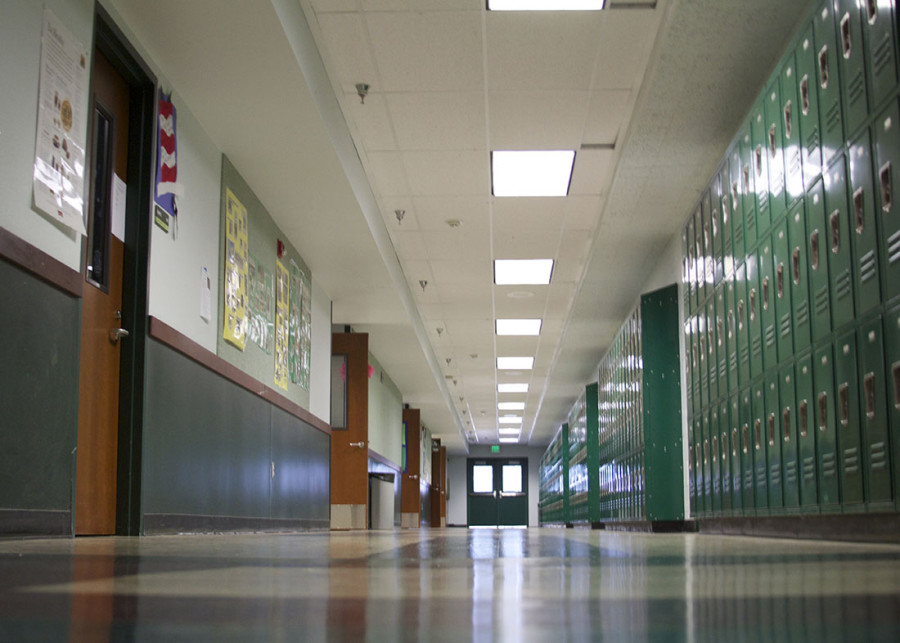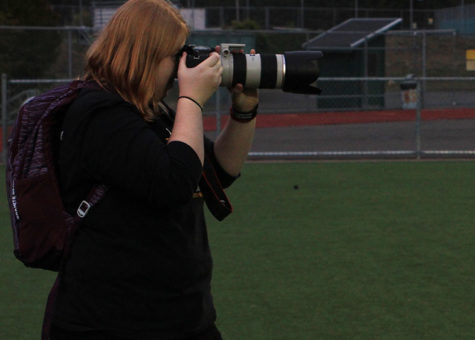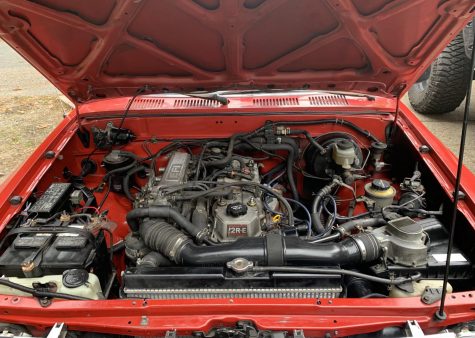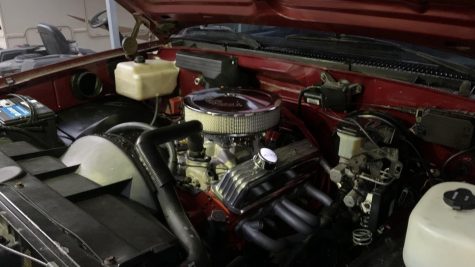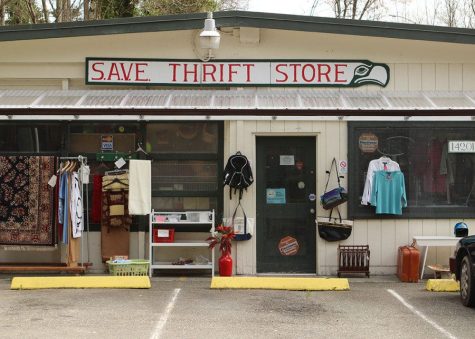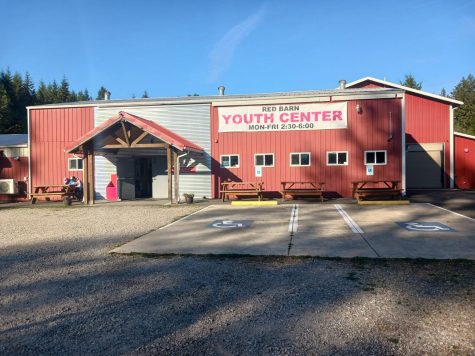PHS Prays for Positive Levy Results
Editor in Chief, Lucy Arnold, tells about the pros and cons of passing the 2016 levy.
February 9, 2016
February 9 will be a very important day for the students and staff of PHS and for the Peninsula School District (PSD) in general. On that day, the final ballots for the Continuing Educational Programs and Operations Levy will be collected, ultimately determining whether PSD can continue to improve its resources for students or regresses in its ability to provide for educational needs and goals. The importance of this levy is visible in virtually every nook and cranny of PHS, but it is equally crucial for the district’s other schools as well.
“This is a continuing maintenance and operations levy that just helps us maintain the status quo of our current services, facilities, staffing, and programs to students. This is not adding to what we have if passed, but if it fails it will force things to be taken away,” said Dave Goodwin, the principal of PHS. Goodwin later added that the district appropriates levy funds very equitably, meaning that each and every PSD school will benefit from the levy and has considerable stake in its success.
These comments reflect several important points about the levy. First, it is a renewable levy because it is designed to replace the current maintenance and operations levy, which expires this year. If passed, the new levy will run through 2020, and it will allow PSD to both maintain and develop its facilities and programs at each school. However, a failure of the levy’s passage would force the school district to cut corners that help students, their families, teachers, and other staff members in a variety of ways.
Over the past year, a committee composed of community members and school board members has determined both the Levy Spending Plan and the priorities for how levy funds will be used. According to the final results of these efforts, the levy will draw funds from a system of property tax collection, and those funds will be funneled toward the upkeep and repair of school grounds and facilities; the maintenance of current teaching staffs, security, technological resources, extracurricular athletics and programs, curriculums, textbook inventories, and STEM capabilities; the addition of teaching staff; and the development of professional programs.
The district itself must pass levies like the one in question for a very important reason: the state is not doing its best to address the needs and issues of public schools. Four years ago, the Washington Supreme Court issued the McCleary v. State of Washington decision, essentially ruling that the state was not doing enough to fund public education. Today, many believe that the state is still not fulfilling this paramount duty.
“The state has not been funding education for a while, and local school boards have taken up the slack and have been raising levies to make up the difference, so that they can maintain the schools and staff and increase technological means, ” said Sheri Ahlheim, a math teacher at PHS and longtime advocate for increased emphasis on education.
So far, Ahlheim and a variety of other PHS and PSD staff and community members have been working hard to make the levy a reality. PHS Leadership and English teacher Danielle O’Leary has been central to these efforts, serving as a liaison between the levy committee and PHS. “My goal has been to get the staff pumped about getting involved with activities that spread awareness, like sign waving, posts to social media, and phone calling. The hope has been that by having staff members involved, we bring it home and make sure that people aren’t just voting because the district office is saying that we should do this or that, but because the levy actually feels important. Getting teachers involved also makes it more personal for our school,” O’Leary said.
Getting the teachers and community involved in this issue is very important because of the urgent need for the levy to pass. According to district officials, the levy represents 24% of the district’s daily operational costs and 80% of the staffing costs. The levy is also crucial to PHS because it could allow the school to address the increasingly visible shortcomings of the school building.
For years, PHS has been limited to simple repair of facilities that began to need replacement or upgrading a long time ago. With each passing year, the consequences of this strategy escalate.
“Our district and building maintenance and grounds crew do a great job with the resources they have, but our building is being patched together with temporary fixes. This Band-Aid approach is what we are stuck with until we can invest in a large scale upgrade to our current facilities. The problem is that we are starting to see major hemorrhaging that requires more than a patch on the roof here and there. Each new patch only prolongs the inevitable,” Goodwin said.
The PHS building is struggling simply because it is over 70 years old, and some parts are beginning to fail beyond repair. Last year, the counselors had to temporarily move from their usual place in the building while that part of the roof was torn off and fixed after countless years of repeated patching. Since then, leaks and a roof that desperately needs replacement have rendered the Fitness Room unavailable for long stretches, and the W portable and auditorium have also suffered major leaks.
All of this leads the PHS community to the following, blunt realization: the people of PHS may be awesome, but the building and many resources are so behind the times that they are beginning to visibly limit the school’s abilities to do awesome things.
“We have great ideas, and we don’t want to just show up everyday, teach, and be done,” said O’Leary. “Sadly, however, everything involves money, and if we don’t have the money, we can’t do as many of the things that we want to do. All the time, I see great things happening in other schools and school districts when they have the money to do it, and I want Peninsula School District to catch up.”
Fortunately, the community’s response to the levy has seemed highly positive so far, and the issue has apparently attracted one of the highest voter turnouts in the district. However, some worries still remain.
One existing concern is that the levy will increase families’ financial burdens by placing another tax on them, while another deals with the fact that the school district might still collect money on the levy if the state began to funnel more funds into PSD. Both concerns are easily addressed.
“As more construction happens in Gig Harbor, the community spreads the load more, so the per-household cost of the levy is actually going to decline over the years,” said Ahlheim. As a result of this spreading of wealth, the $2.19 tax per $1000 of assessed property value in 2017 would fall to $2.16 by 2020, even though the total amount collected would rise from $23,575,000 to $27,690,000.
Furthermore, if the state adopted a program that fed more substantial amounts of money into the district, the levies would drop; the school district would not be reaping the combined revenues of both levies and increased state funds.
Because the main worries about the levy are so easily remedied, the levy is likely to be passed and successful. This is helped by the facts that the levy is renewing a system that is already in place (not adding an additional tax on top of what PSD residents already pay) and that it is the only issue on the current ballot, both of which simplify the voting and decision-making processes for citizens.
At this point, PSD students and teachers can do little more than sit back and wait for the results of the voting, praying that all of the efforts to spread the word have paid off.
“Traditionally, the district only has about a 30-35% voter turnout, which is scary because the levy issue is so important to Peninsula and everyone else in this district,” said Ahlheim. “It’s key that parents and teachers all show up to vote, so the other teachers and I have just worked so hard to talk it up throughout the community.”
The key thing to remember is that this issue essentially determines the educational welfare of PSD students and staff for the next four years. Each school year, students at PHS and the other schools in the district spend around six hours per day at school for 56 weeks of the year. During this time, students grow academically and personally, gain countless skills, and dive into experiences that significantly impact their development into adults.
PHS is thus not just a school; it is a second home to many people. This school and those near it deserve the outpourings of community support that will allow them to better address student needs.
“It would be nice to see a turn in the community. It would be nice to see people realize that the community is growing and that we need to be able to supply great schools and a great education for them,” O’Leary said. “Every school has a different story, and our story at Peninsula is that there’s leaks in the ceiling and our gym might be condemned, and we need security personnnel to secure the twelve doors on campus, so our story is that we need these people, these resources.”
As O’Leary noted, the constant use of degraded, outdated facilities at PHS underlines the need for a greater community emphasis on quality of school resources.
“Our facilities are used seven days a week by not just staff and students, but by the entire community. I am embarrassed at times by the condition of some of the facilities, especially when I visit other high schools in our league and see the condition. It truly is night and day,” said Goodwin.
With all of these arguments in mind, voter turnout on the behalf of PHS and other PSD schools is student and teachers’ biggest hope for February 9. It’s not that PSD schools are not already amazing places; it’s just that they need resources to grow and thrive, like any community does.
“School-related issues need to become a priority,” Ahlheim said. “They truly benefit everyone – they benefit parents, they benefit teachers and other staff, and most of all, they benefit kids, and the kids are the future.”

